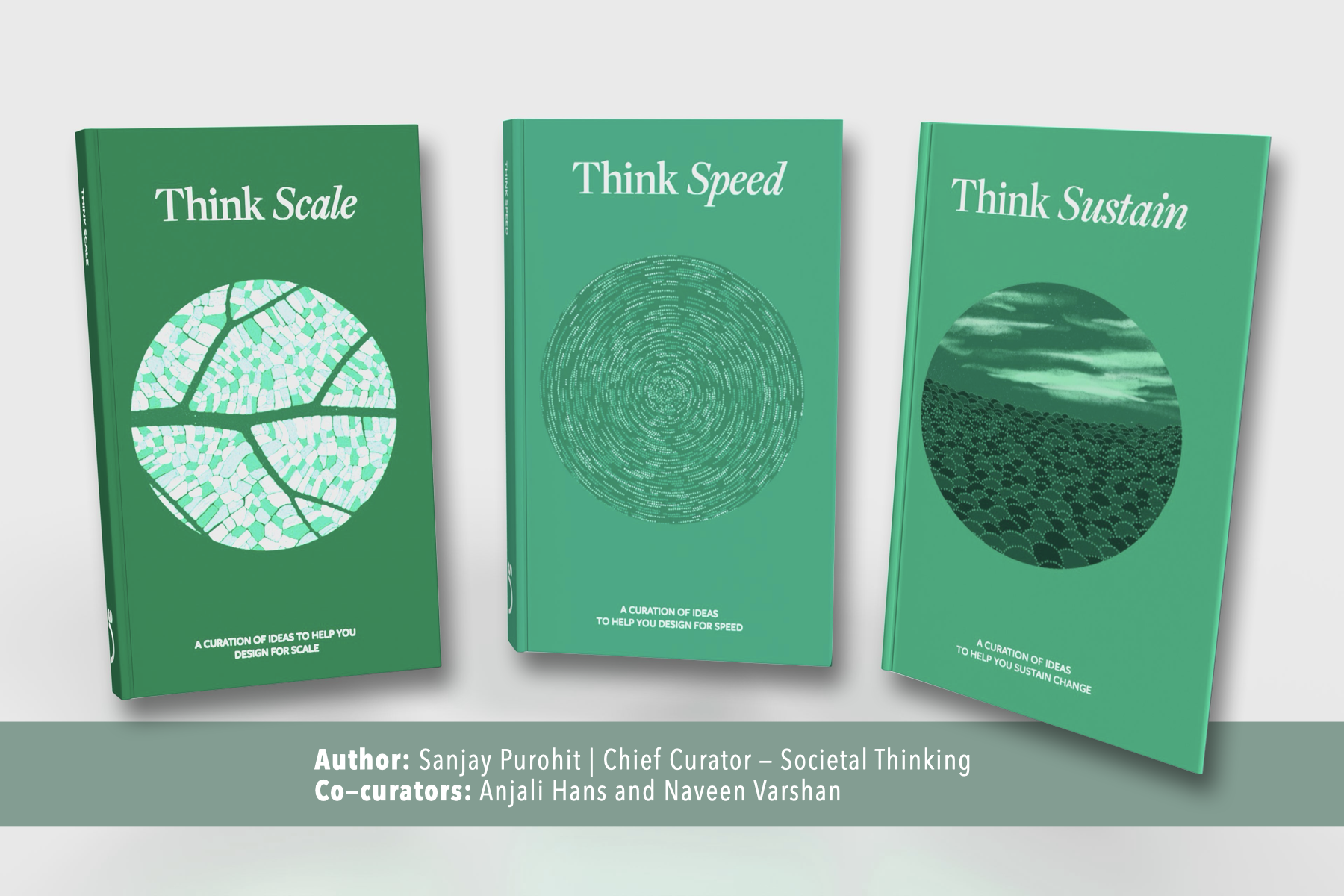I live in Bangalore, the city of traffic and lakes – frequently known to cause long delays and spontaneously catch on fire, respectively though not exclusively. Like most of us, I share my woes on social media, finding a community of Bangalore dwellers who are asking the same question as me – What can I do?
Despite India being the largest democracy in the world, it is confusing for citizens like me to understand and be a part of decision-making processes, especially around issues that affect our everyday lives. The question ‘What can I do?’ is as often resignation to the state of affairs, just as it is an urge to take action, to participate. It is exactly this dilemma that Antaraa Vasudev is trying to address.
I first met Antaraa in early 2023. Over breakfast, she recounted wondering what it takes to build a bridge between citizens and governments as one of her “big curiosities”. She had worked closely with DemocracyOS in Argentina and France and was rooted in the landscape of democratic movements and technology for good. Antaraa’s curiosity eventually led her to leave her full-time job and set up Civis in 2018 – a community-driven non-profit aimed at increasing citizen participation in the lawmaking process.
Recently, I caught up with Antaraa again, this time delving deeper into what Civis does and how it all began. Here are a few snippets from our conversation.
What was your reimagination of democratic systems?
While working closely with democratic movements in Argentina and France, I realised driving constructive dialogue between citizens and governments is vital to reinforcing trust in democratic systems. I remember in the 2010s, we’d all started using social media as a window to the world – both to see what was going on in the social, political, economic and cultural lives of others and give them a glimpse into ours. It made me wonder how we could use this new tool – not just social media but technology at large – to foster generative conversation between citizens and governments. Could technology enable citizens to participate meaningfully in democratic systems? Could citizens and governments – two actors that should have far more opportunities to talk – meet one another halfway? Could we collectively usher in a new wave of democracy?
I think it’s a superpower we have, as citizens, to have a voice and have it be heard and, for the longest time, we’ve not been fully aware of the right time or platform for us to air our thoughts and concerns. I remember seeing a call for feedback once in a tiny corner of the newspaper and once, hearing about a consultation from a friend. Let’s suppose I could see these calls for feedback for every legislative document, what are the odds I’d be able to decipher the legalese and understand what was being changed and why? Even if I were a super citizen who looks at all these documents, understands them and formulates feedback, I run into barriers in giving this feedback to the government using the few channels they have. Now, let’s assume I managed to submit my feedback as well – I wouldn’t know what comes of the effort I’ve put in. Was it read? Was it incorporated? If not, why? It’s not just laborious as a process, but also erodes citizen trust.
How did you (try to) answer these questions with Civis?
Citizens can participate in democratic systems in many ways, from filing an RTI to attending a protest. For me, the biggest gap that emerged was in the legislative process. The fact that laws were being made for 1.3 billion citizens with the feedback of only a few didn’t sit well with me. These laws define how our daily lives look, and how our futures will look. While earlier, avenues to engage a lot of people in the legislative process were limited, technology offered many new possibilities.
In 2018, just as I had set up Civis, the Bangalore Master Plan had come out for public feedback, led by Janaagraha. They were kind enough to involve us. We ran a small campaign – a couple of radio ads – and somehow managed to get about 1,800 comments on the consultation! It was an AHA! moment for me. It showed me that people really did want to be active participants in decision-making processes and set the tone for how Civis took shape.
Hereon, what were the shifts in your journey?
Working on the Bangalore Master Plan made it clear that it isn’t just one law at a time but a range of laws – around, say, IT policy or the environment or disability justice – that inform people’s lived experience.
We shifted from thinking about public feedback from a campaign point of view to a system optimisation point of view. In 2014, a policy recommendation was issued for all Ministries and Departments to gather public feedback on draft laws and policies. So, while lawmakers wanted to reach out to the public, there weren’t many ways for them to do so effectively. Running campaigns for a couple of draft laws and policies wouldn’t enable citizens to engage with them at the scale required. It is only when we surface all of these hundreds of draft laws and policies that are open for public feedback and in ways that are accessible for citizens that we truly tap into the power of democratic decision-making.
How did you work towards making this process citizen-centric?
We drew inspiration from the way we live our lives now – at the click of a button. Click a button and a car shows up or a week’s worth of groceries get delivered. Could being a part of the democratic process be made as simple?
It was around this time that I met Sanjay and got introduced to Societal Thinking. He told me the DIKSHA story – how they are able to track the pulse of the Indian education system – and it soon became the blueprint for what I wanted to do at Civis.
The more I understood how to design for scale, for agency, the more I started thinking about the platform approach. I envisioned it as a space where all draft laws and policies could be accessed by citizens. As we built on this idea, we moved beyond just aggregating these documents and brought in lawyers to help simplify the legalese. Then, we reached out to concerned communities to participate. The idea was to include the voices of people who would be directly affected by the laws, not just netizens.
In the early days, we visited Mumbai’s Constituency 102 to gather feedback for the Corporator. We went door to door, meeting people and asking for feedback that would be useful for the corporator. A strange thing happened – people who were homeowners openly shared their feedback but tenants were reluctant. It made us realise people who felt a sense of security in their neighbourhood and livelihoods were more trusting of us and by extension, of government processes and services. It reaffirmed the need to design for trust on our platform and to ongoingly build trust offline as well. At the same time, I believe trust isn’t something you can design for in a one-off way. From our side, we make sure we are true to the feedback people give, transparent and work towards restoring the agency of both citizens and government officials in whatever way we can.
We wanted to design for trust as well, for both citizens and the government. We connected with community organisations to create reports and analysis to help the government make sense of the feedback citizens have given. On the other side, we embedded signals to the feedback on the platform that would give us telemetric data around if the feedback has been viewed and when, for us to close the loop for citizens.
As citizens, we often consider government processes to be time-consuming and tedious. Since you work so closely with these processes, what has your experience been like?
I think my biggest moments of optimism in our work come from seeing and meeting people involved in these processes. It’s unfortunate that as citizens, we don’t get many opportunities to do so. For example, in 2023, there was a disability rights consultation that came out for people with disabilities. For this legislation, the Ministry of Social Justice & Empowerment made sure the entire document, which is over 100 pages long, was rendered in Sign Language. They even made videos in Sign Language for each chapter, printed these chapters in Braille and so on.
Even in consultations, sometimes about 72% of feedback gets accepted – a number that really surprises people. I am grateful I’ve had the chance to meet heroes in the system at every level. I recall meeting an officer from the B.M.C. Pest Control Department who used to travel 3 hours to come to work every day and still made time to sit with me. Their rigour is inspiring.
I wish we could celebrate these stories more.
Finally, where is Civis now and what’s next?
Currently, we have engaged 23,000+ citizens in 710+ cities and towns pan-India and have received 33700+ responses through our various means of outreach.
In the next few years, we’re trying to unlock working at societal scale – with the platform, with our programmes that include handbooks and courses. We’re also looking to work more deeply with communities and at the grassroots level.
We want to establish best practices in consultation, by demonstrating the advantages of community participation in lawmaking – for good governance. Working towards institutionalisation of consultative norms for policy making, and creating established channels for engaging CSOs; analysing data and using a scalable technology-driven approach for public consultations. Civis is working towards reaching 1 million citizens by 2030.
Read about more Societal Platforms here.
References:
- https://www.hindustantimes.com/cities/bengaluru-news/shocking-visuals-of-bengaluru-traffic-holdup-on-orr-commuters-stuck-for-hours-ahead-of-long-weekend-101695872609607.html
- https://www.nationalgeographic.com/science/article/bangalore-india-lake-bellandur-catches-fire-pollution
- https://www.freepressjournal.in/india/bengaluru-electric-car-catches-fire-in-middle-of-the-road-in-jp-nagar-horrific-visuals-surface
 Back
Back


